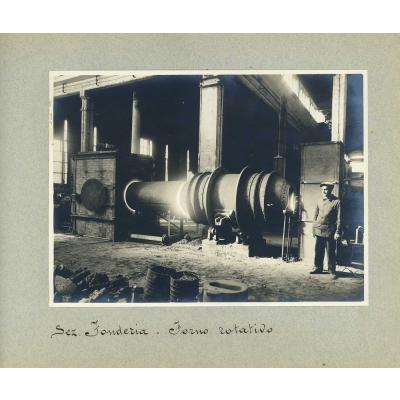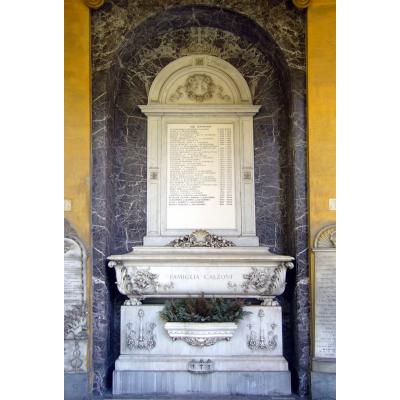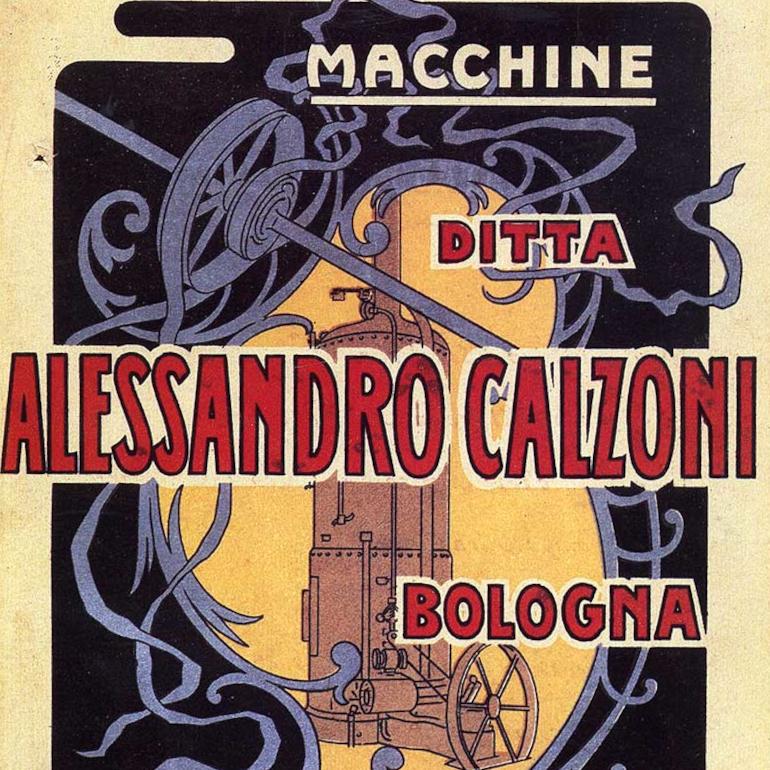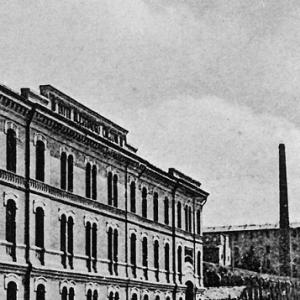Schede
The Foundry was originally located in a large area overlooking viale Pietramellara at the current junction with via Amendola. This is how it is described in the "Guida illustrata di Bologna - Storica artistica industriale" (Illustrated Guide to Bologna - Historic artistic industrial), published in 1892 by the Successori Monti Typography: "Near the railway station is the Foundry and Factory of the Alessandro Calzoni Company, which has its warehouse in Piazza Mercanzia, No. 5. This Company, which is certainly the most important of its kind in Bologna, was founded in 1836 and has continued to progress and expand as the needs of the times and scientific progress have required it, so that it now has a large building and numerous workers. This foundry performs great works, such as hydraulic, steam and gas engines, industrial, agricultural, oil and wine machines, hydraulic pumps, etc. The warehouse, in Piazza della Mercanzia, was specially built a few years ago by engineer Filippo Buriani".
The Calzoni mechanical industry was founded by Alessandro Calzoni (Bologna 1807-1855) in 1830 as a small workshop for the casting of bronze and pewter objects. Soon the workshop began producing industrial machinery for a steam spinning mill, and later installed a foundry for cast iron in the former Carrobbio church. Curiosity and sense of initiative drove Alessandro to make numerous educational trips to Europe. These trips were the prerequisite for directing the company's activities in the renewal of agricultural mechanics, from iron parts for ploughs to hydraulic pumps. On his death, he was succeeded by his son Costantino and his brother Hannibal. In the second half of the 19th century, Calzoni specialised in the construction of industrial machinery and the new hydraulic turbines, remaining one of the most advanced on the Bolognese and national industrial scene. With Alfonso and Giuseppe, the company specialised in the production of machinery for hydroelectric plants and agricultural machinery. During the First World War, the workshop was declared an auxiliary factory, combining its traditional production with war supplies, in particular special machinery for ammunitions and turbines for hydroelectric plants in the Apennines.
After the end of the conflict, the company joined forces with the Parenti foundry, creating the "Società Anonima Officine Calzoni Parenti" (Calzoni Parenti Workshop Limited Company), moving to Via Emilia Ponente. The company divided its production into three sectors: hydraulic systems, cast iron castings and various machinery construction. It was undoubtedly Alfredo Calzoni's study in the field of hydraulics that allowed the company to establish itself in the field of motors for plant sluice gates, ship haulings and cranes. It was in the 1930s that an important collaboration developed between the Calzoni company and the Regia Marina (Royal Navy), especially in the field of submarine and surface unit controls. During the Second World War, the company's workshops sustained heavy damage. Post-war reconstruction of the company began under the leadership of Dr Augusto Calzoni. In those years, it already seemed to change into the appearance that the company would maintain until the 1980s, with the expansion of the workshop and carpentry. 1964 saw the merger between the Riva and Calzoni companies, which had already been cooperating since the 1920s. Riva-Calzoni expanded into other sectors, from commercial to hydroelectric plants. In 2000 Calzoni moves to Calderara di Reno and the company's activity is divided into three main product lines: Lifts for Submarines, Visual Landing Aid Systems, Special Naval Applications. In 2012 it became part of the L-3 Communications Corporation.
Bibliography: 1834-1984: One hundred and fifty years of the life of Calzoni, Bologna, Riva Calzoni 1984; Maria Angela Neri, Quando si tirava la vita coi denti..., edited by Gianfranco Paganelli, Bologna, Centro sociale ricreativo culturale Santa Viola 2004; Antonio Campigotto et al, Prodotto a Bologna. Una identità industriale con cinque secoli di storia, Bologna, Renografica 2000; Antonio Campigotto, Roberto Martorelli (ed.), La ruota e l'incudine. La memoria dell'industria meccanica bolognese in Certosa, Bologna, Minerva Edizioni 2016. Translated by Lorenzo Rocco, 2022.








